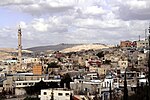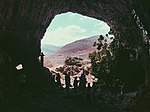Qibya massacre
The Qibya massacre occurred during "Operation Shoshana", a reprisal operation that occurred in October 1953 when Israeli troops under Ariel Sharon attacked the village of Qibya in the West Bank. At least sixty-nine Palestinian villagers were killed, two-thirds of them women and children. Forty-five houses, a school, and a mosque were destroyed. The attack followed cross-border raids from the Jordanian-occupied West Bank and Israeli reprisals, particularly the attack on Qibya, were a response to the Yehud attack in which an Israeli woman and her two children were killed in their home.The act was condemned by the U.S. State Department, the UN Security Council, and by Jewish communities worldwide. The State Department described the raid as "shocking", and used the occasion to confirm publicly that economic aid to Israel had been suspended previously, for other non-compliance regarding the 1949 Armistice Agreements. The operation was codenamed Operation Shoshana by the Israel Defense Forces (IDF). It was carried out by two Israeli units at night: a paratroop company and Unit 101, a special forces unit of the IDF.
Excerpt from the Wikipedia article Qibya massacre (License: CC BY-SA 3.0, Authors).Qibya massacre
Qebya,
Geographical coordinates (GPS) Address Nearby Places Show on map
Geographical coordinates (GPS)
| Latitude | Longitude |
|---|---|
| N 31.9774 ° | E 35.0097 ° |
Address
مدرسة ذكور قبيا الاساسية
Qebya
Palestinian Territory
Open on Google Maps









